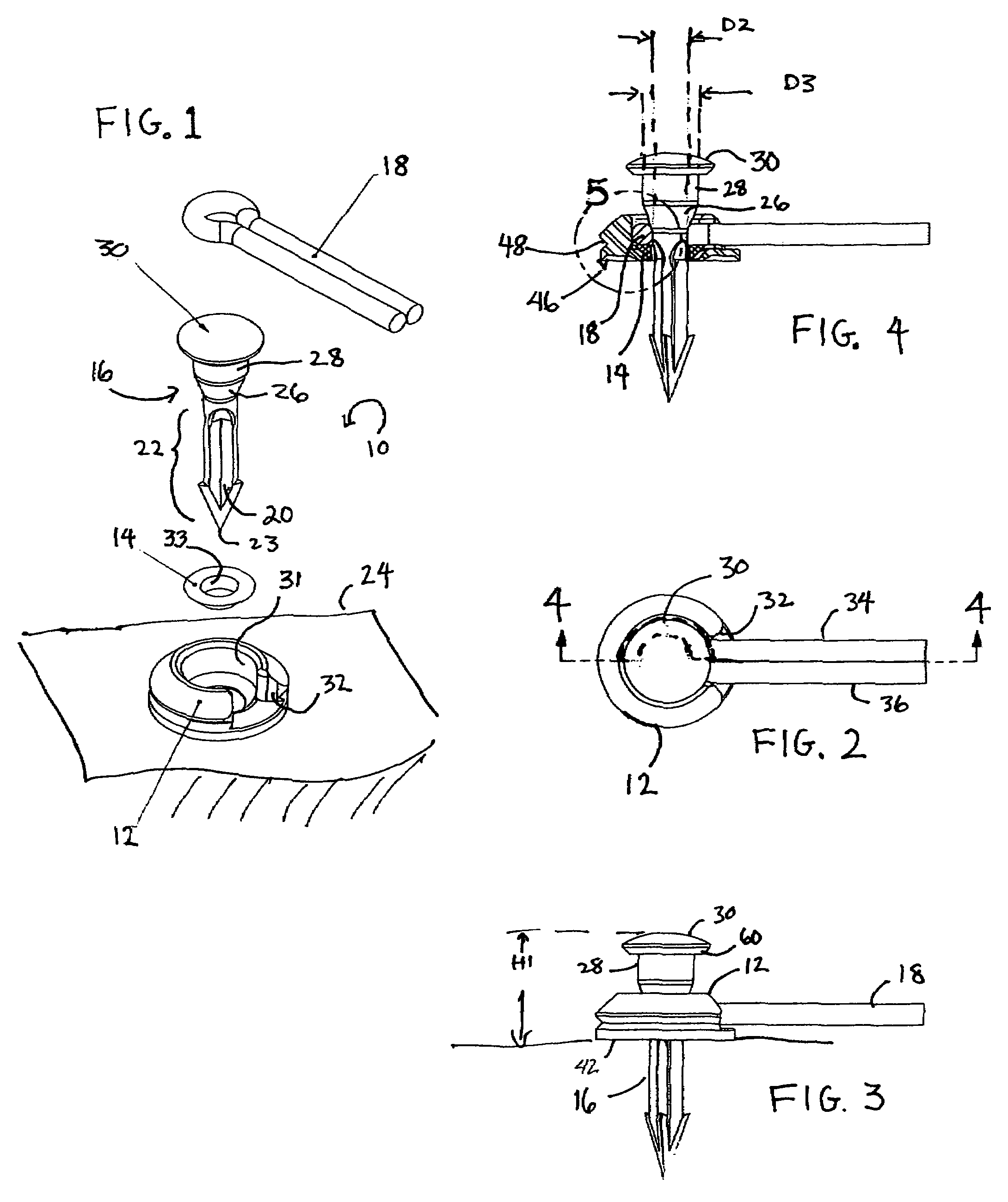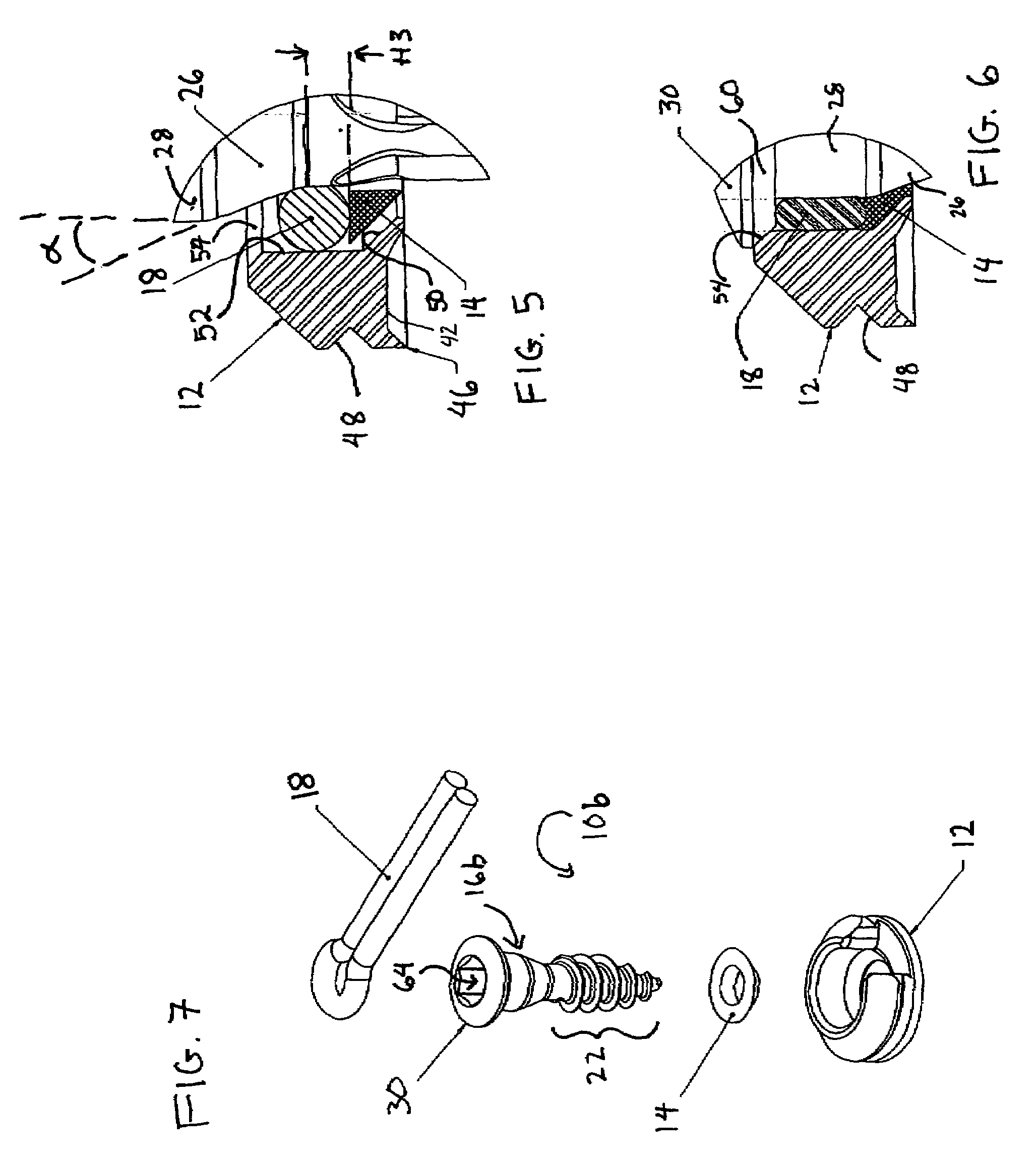Cable anchor for attaching elastic cable to a bony substrate
a technology of elastic cable and bony substrate, which is applied in the field of bone screws and cables for fixing fractured bones, can solve the problems of inconvenient manipulation and fixing of some polymer cables with traditional methods and fasteners, inability to fix certain elastics, and inability to easily fix certain elastics
- Summary
- Abstract
- Description
- Claims
- Application Information
AI Technical Summary
Problems solved by technology
Method used
Image
Examples
Embodiment Construction
[0019]As shown in FIG. 1, an anchor (generally designated 10) a device in accordance with the invention has at least 3 general components: a compression collar 12, a centering ring 14, and an insertable anchor post 16. A cable 18 is also shown as part of a system of cable and anchor in accordance with a system of the invention. The invention is intended to anchor a high strength, elastic cable capable of considerable elongation; it is assumed that the diameter and elastic properties of the cable are known in advance, allowing the dimensions of the anchor components to be predetermined based on the cable dimensions and properties.
[0020]The element 16 is generically described as an insertable anchor post. In one embodiment (as shown in FIG. 1) a penetrating nail provides a suitable insertable anchor post 16. In another embodiment, (discussed below) a screw serves as an insertable anchor post 16. Various designs of nails, screws, brads, tacks, or other penetrating post-like anchors may...
PUM
 Login to View More
Login to View More Abstract
Description
Claims
Application Information
 Login to View More
Login to View More - R&D
- Intellectual Property
- Life Sciences
- Materials
- Tech Scout
- Unparalleled Data Quality
- Higher Quality Content
- 60% Fewer Hallucinations
Browse by: Latest US Patents, China's latest patents, Technical Efficacy Thesaurus, Application Domain, Technology Topic, Popular Technical Reports.
© 2025 PatSnap. All rights reserved.Legal|Privacy policy|Modern Slavery Act Transparency Statement|Sitemap|About US| Contact US: help@patsnap.com



